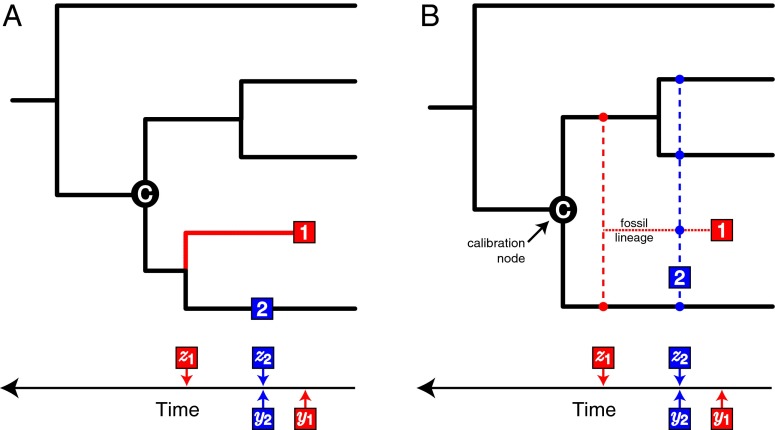Fig. 1.
Representations of fossils on (A) a resolved FBD tree and (B) an unresolved FBD tree. (A) The phylogeny of four extant species and two sampled fossils, in which the true phylogenetic relationships are known [the resolved FBD tree described in Stadler (47)]. Each fossil has observed age y and attachment time z, which is the point at which the fossil links to the tree. Fossil 1 (red), the youngest fossil specimen, is descended from node C via speciation at time z1 and occurs on an extinct lineage, such that y1 < z1. Fossil 2 (blue) lies directly on a lineage in the extant tree; therefore, y2 = z2 and fossil 2 is the ancestor of a sampled, present-day taxon. (B) The unresolved FBD tree on which the precise phylogenetic relationships of the fossils are ignored and the two fossil specimens are used to calibrate the extant tree. Both fossils calibrate a single internal node, C, based on prior knowledge that fossils 1 and 2 are descendants of the calibration node. All other nodes are uncalibrated. Because fossil 1 (red) attaches to the extant tree via speciation, where y1 < z1, the unobserved speciation event is assumed to occur at any lineage that is descended from C and that intersects with z1 (small red ●). The attachment time of fossil 2 (blue) is equal to the age of the fossil; thus, fossil 2 represents a direct ancestor of any lineage descended from node C that intersects with time z2 (small blue ●), including any “ghost” lineages leading to other fossil taxa (e.g., the dotted red line leading to fossil 1).

